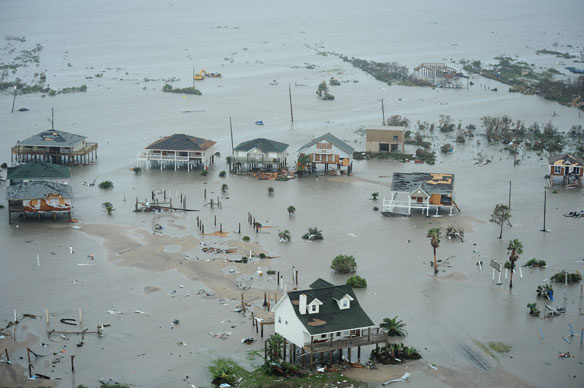
Galveston Island, Texas, after Hurricane Ike Sept. 13. U.S. Air Force photo/Staff Sgt. James L. Harper Jr. Photo source: ©© Chuck Simmins
Excerpts;
For places like the Texas Gulf coast, which on average gets slammed with a major hurricane every 15 years, higher waters mean a storm today will tend to be much more dangerous than one of equivalent strength several decades ago.
The paralysis in Texas reflects a troubling truth: The United States lacks a unified national response to the threat posed by rising sea levels…
Read Full Article, Reuters / Huffington Green
Reuters’ Water’s Edge Report – PART I: Insidious Invasion: “As The Seas Rise, A Slow-Motion Disaster Gnaws At America’s Shores” By Reuters(09-05-2014)
A Reuters analysis finds that flooding is increasing along much of the nation’s coastline, forcing many communities into costly, controversial struggles with a relentless foe.
Hurricane Sandy Relief Bill Fails to Face Coastal Realities, By Rob Young
As part of the sorely-needed aid package to help victims of Hurricane Sandy, Congress is also considering spending billions on ill-advised and environmentally damaging beach and coastal rebuilding projects that ignore the looming threats of rising seas and intensifying storms.
Shoring Up the Nation’s Crumbling Coastlines, (01-27-2013)
We Need to Retreat From the Beach, An Op Ed by Orrin H. Pilkey.








